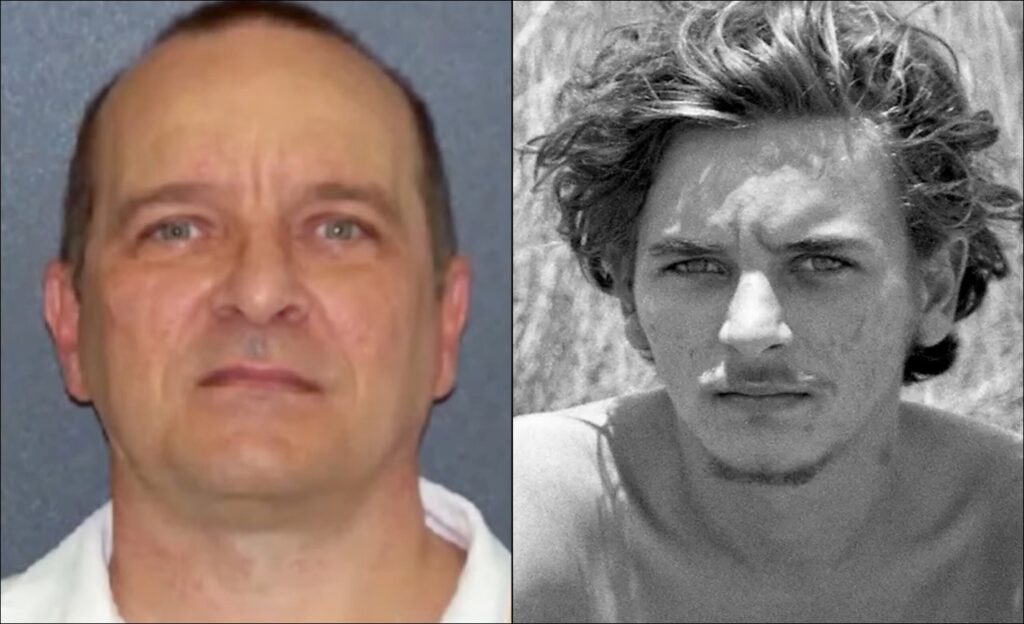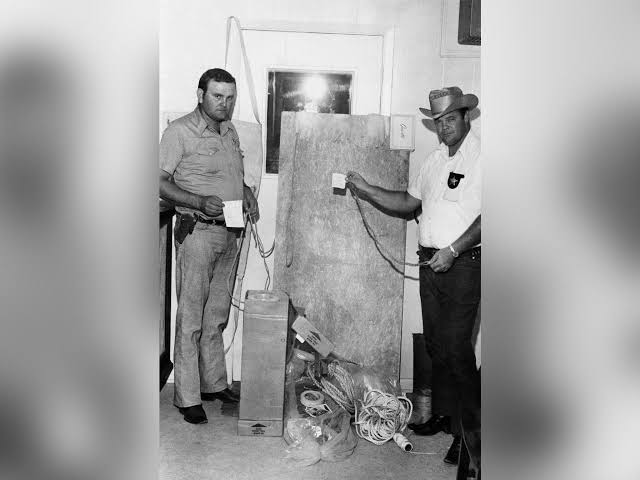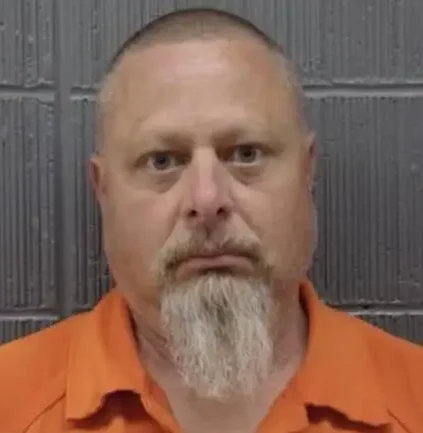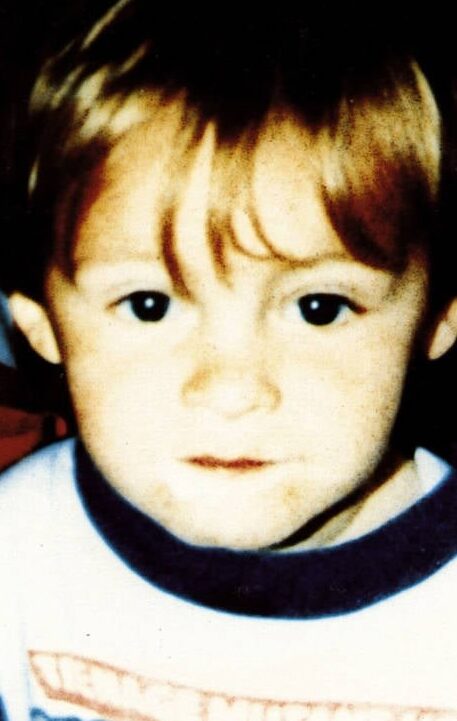
Dean Arnold Corll was an American serial killer, also known as the “Candy Man”, who, together with two youthful accomplices named David Owen Brooks and Elmer Wayne Henley, abducted, took pleasure in the extreme and prolonged sexual torture of his victims, and murdered a minimum 28 boys.



Dean Corll was born in 1939, in Indiana as the first child to over – affectionate, over protective mother, Mary, and a father, Arnold, who was a strict disciplinarian and the boys were always being punished. According to some sources, his father provided no stabilizing influence, regarding his children, with thinly-veiled distaste, resorting to harsh punishment for the smallest infractions. His parent, Mary and Arnold, were quarreling all the time and they were divorced while Corll was still an infant. Arnold joined the army. Mary found life without Arnold sad and so she bought a horse-trailer and moved to Tennessee to be closer to the base where Arnold was posted. They remarried after World War II, in 1950, Corll’s parents moved to Pasadena, but the reconciliation was short lived and, in 1953, the couple once again divorced, with the mother again retaining custody of her sons. According to some sources, Arnold didn’t like children at all. The boys maintained contact with their father. When the couple separated a second time, Dean and Stanley were left with an elderly couple most of the time while Mary went looking for work. She was working to support the family on her own. The two boys were at different poles on the personality scale. Stanley was friendly and outgoing, always playing with other children from the neighborhood or school. Whereas Dean was always a loner, preferring to stay inside and away from the other children. He was a shy, serious child who seldom socialized with other children and had a tendency to display concern for the wellbeing of others. At the age of seven, he suffered an undiagnosed case of rheumatic fever, which was only noted in 1950, when doctors found Corll had a heart condition, he was ordered to avoid P.E. at school. Rheumatic fever left Dean with a heart condition, resulting in frequent absence from school, and he seemed to welcome the change when his mother remarried a travelling salesman named Jake West and the family moved to the small town of Vidor, where Corll’s half-sister was born in. With both his parents working Dean was extremely protective of his younger siblings always watching out for them and trying to keep them out of trouble. In Vidor, Corll’s mother and stepfather started a small candy company, operating from the garage of their home, and almost immediately, Corll was working while still attending school. Corll was generous with samples as he sought to win new friends.
Corll still remained a loner in his teenage years. At Vidor High School, Corll was regarded as a well-behaved student who achieved satisfactory grades prior to his graduation, Dean found himself a hobby in scuba-diving but had to give it up after fainting one day while diving, a symptom of his heart defect. At school he enjoyed music and was a keen trombone player. Teachers remembered him as a quiet and polite student. In 1958 Following his graduation from Vidor High School, the family moved to the Heights district of Houston and opened a new shop. In 1960, Corll moved to Indiana to live with his grandparents. He stayed in Indiana for almost two years, even forming a close relationship with a local girl, but returned to Houston in 1962 to help with his family’s candy business. He later moved into an apartment of his own above the shop.
In 1963 Corll’s mother divorced Jake West and appointed Dean as vice-president of the candy company. The same year, one of the teenage male employees of the candy company complained to Corll’s mother that Corll had made sexual advances towards him. In response, Mary West simply fired the youth.
In 1964, despite his heart condition, Corll was drafted into military service, where he displayed the first signs of flagrant homosexuality. On turning thirty, in December 1969, he seemed to undergo a sudden shift in personality, becoming hypersensitive and glum. According to the other source, Corll reportedly hated military service; he applied for a hardship discharge on the grounds that he was needed within his family’s business. The Army granted his request and he was given an honorable military discharge in 1965, after ten months of service. Corll returned to Houston and resumed the position he had held as vice-president of his family’s candy business.
In 1965, the Corll Candy Company moved across the street from a Heights elementary school. He was known to give free candy to local children, in particular teenaged boys. He was given the nickname “The Candy Man” by the media when his crimes were eventually uncovered. The family company also employed a small workforce, and he was seen to behave flirtatiously towards several teenage male employees.
In 1967, he befriended 12-year-old David Brooks, then a sixth grade student and one of the many children to whom he gave free candy. Following the failure of her third marriage in 1968, Corll’s mother moved to Colorado. According to some sources, her third husband saw her as a business rival and threw her out of the house. The candy company began to fail and, following the closure of the candy company, like his father, Corll took a job as an electrician at the Houston Lighting and Power Company. Although they often talked on the telephone, Corll’s mother was never to see her son again.
Neighbors liked Dean Corll. He was always ready to help as an electrician, charming. Nobody found strange his behavior. They didn’t worry because he was an adult spending time with mid teenagers.
Brooks’ parents were divorced: his father lived in Houston. In 1970, when he was 15, Brooks dropped out of high school and moved to live with his mother. Whenever he visited his father in Houston, he also visited Corll, who allowed him to stay at his apartment if he wished to do so. The same year, he moved back to Houston and, by his own later admission, began regarding Corll’s apartment as his second home. Corll gave money, presents to Brooks. During 70’s, Dean Corll paid Brooks 200$ or 250$ per boy, to lure boys to Corll’s place.
In the winter of 1971, Brooks introduced Elmer Wayne Henley to Dean Corll; Henley may have been lured to Corll’s address as an intended victim.
However, Corll evidently decided Henley would make a good accomplice and offered him the same fee for any boy he could lure to his apartment, informing Henley that he was involved in a “sexual slavery ring” operating from Dallas. Elmer Wayne Henley was a local 14-year-old who came from a broken home. He had a drinking problem and soon dropped out of school to work to support his divorced mother and three younger brothers.
From 1970 to 1973, Corll killed at least 27 boys. All of his victims were males aged thirteen to twenty, the majority of whom were in their mid-teens. Corll’s youngest known victim was a nine-year-old neighbor. We don’t have any information whether Corll killed before. Henley voluntarily offered to distribute posters of missing boy, his friend. Most victims were abducted from Houston Heights, which was then a low-income neighborhood. Families of Corll’s victims were highly critical of the Houston Police Department, which had been quick to list the missing boys as runaways who had not been considered worthy of any major investigation. The same happened several with John Wayne Gacy, ”Clown killer” whose span of crimes was from 1972 to 1978. With most abductions, he was assisted by one or both of his teenaged accomplices, Elmer Wayne Henley and David Owen Brooks. Several victims were friends of one or the other of his accomplices; and two other victims were former employees of the Corll Candy Company.
Corll’s victims were typically lured into his van with an offer of a party or a lift and driven to his house. There, they were either plied with alcohol or drugs until they passed out, tricked into putting on handcuffs, or simply grabbed by force. They then were stripped naked and tied to either Corll’s bed or, usually, a plywood torture board, where he enjoyed, took pleasure in the extreme, prolonged sexual torture of his victims, in the ways we can’t imagine and after several days, killed by strangulation or shooting with a .22-caliber pistol. In several instances, Corll forced his victims to phone or write to their parents with explanations for their absences in an effort to allay the parents’s fears for their sons’ safety. Corll is also known to have retained keepsakes—usually keys—from his victims.

Their nude bodies then were tied in plastic sheeting and buried in any of four places: a rented boat shed; a beach etc.
During the years in which he abducted, tortured and murdered young men, Corll often changed addresses. However, until he moved to Pasadena in the spring of 1973, he always lived in or close to Houston Heights.
In 1973, Henley broke the cycle. He bought Rhonda Williams, 15, to the house and one potential victim. She was Henley’s girlfriend. Suddenly, Elmer Wayne Henley should have become a victim.
In 1973, Elmer Henley made a tearful phone call to a police. They found the Candy man dead, naked, six bullet holes in his shoulder and back, with Henley claiming he had killed his “friend” in self-defense. He said for luring boys, their names to believe him and places to find boys, but denied active participation.
Both Elmer Wayne Henley and David Owen Brooks denied any involvement in torturing and murdering. Brooks came with a father. Brooks was fingering Henley as the trigger man in at least one slaying. David Brooks gave a full confession that evening, admitting to being present at several killings and assisting in several burials, although he continued to deny any direct participation in the murders. He agreed to accompany police to High Island Beach to assist in the search for the bodies of the victims.
According to forensic psychologist Katherine Ramsland who examined Elmer Wayne Henley recently, he is neither psychopathic nor sadistic personality, but he was groomed.

Elmer Wayne Henley and David Owen Brooks were tried separately for their roles in the murders.
In 1973, David Brooks married his pregnant fiancée, and Henley was alone with Corll. Tree abductions occurred during that period.
Henley was brought to trial in San Antonio in 1974, charged with six murders. Henley was sentenced to six consecutive 99-year terms — a total of 594 years — for each of the murders for which he was charged. Elmer Henley’s conviction was overturned on appeal in December 1978, based on the issue of pre-trial publicity, but he was sentenced a second time, in 1979.
David Brooks was brought to trial in 1975. Brooks had been indicted for four murders committed, but was brought to trial charged only with one murder. Brooks’ defense attorney argued that his client had not committed any murder and attempted to portray Corll and, to a lesser degree, Henley as being the active participants in the actual killings.
David Brooks’ trial lasted less than one week. The jury deliberated for just 90 minutes before they reached a verdict. He was found guilty of and sentenced to life imprisonment. He showed no emotion as the sentence was passed, although his wife burst into tears.
Wayne Henley has taken up art in prison and paints flowers and other nonviolent subjects. The offering of his paintings and other personal items on e-Bay has caused a stir of protest in the city of Houston and elsewhere.
Unlike some states, Texas does not have a “Son of Sam” law that prevents criminals from profiting from books, paintings, etc. that become popular because of criminal notoriety.
Several things are important here, besides genetics. Family dynamics were dysfunctional. Over-protective mother had very strong effect on a son. He could have done whatever he wanted, because there were no limits. Absent father he missed, but then fusion of love and harsh punishments. He watched his mother loving that kind of man and her suffering and failures in marriages. It would have been submerged hatred towards father. Still, nothing we know can’t explain monstrous behavior Dean Corll exhibited.

At the time, the ”Houston Mass Murders” were considered the worst example of serial murder in American history.


